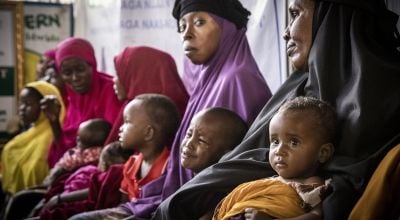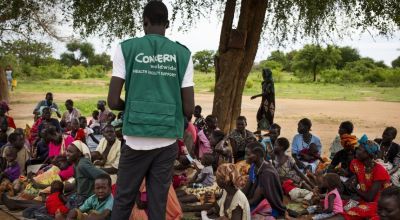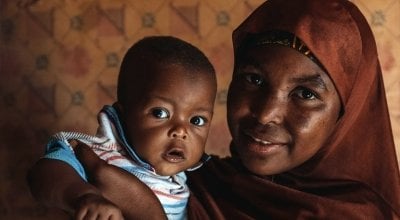
Read our 2023 annual report

Knowledge Hub
In 2000, Concern and partner organisation Valid launched an experimental pilot programme that combined the newly-invented Plumpy’Nut with a system for decentralising the treatment of acute malnutrition. A quarter of a century later, it’s still saving millions of lives for peanuts.
The first 1,000 days of a child’s life are crucial for their growth and development. Well-nourished children are 33% more likely to escape poverty as adults, and investments in nutrition can generate benefit-cost returns of 16 to one.
On the other hand, childhood malnutrition can lead to a lifetime of consequences. It can also be a short lifetime: Per the 2024 Global Hunger Index, half of all child deaths are linked to malnutrition. Of the 9 million people who die from hunger-related causes every year, many are children.
For nearly 25 years, however, there has been a standard for treating childhood malnutrition with a high cure rate and a low cost. When used as part of a community-based malnutrition treatment programme, ready-to-use therapeutic food (RUTF) can see a cure rate of over 90%. The product and system we know now to be so effective was launched in 2000, with Concern as one of two organisations taking the lead on what would become a humanitarian revolution.
What is ready-to-use therapeutic food?
Ready-to-use therapeutic food (RUTF) is a peanut-based paste stored in a foil pouch that gives malnourished children the vital nutrients and calories they need to recover, in a way that even infants can handle. The original and best-known form of RUTF is Plumpy’Nut, which was invented in 1996 by French paediatrician André Briend.
The exact ingredients for an RUTF can vary based on the brand, but the standard formula has the same features: a high concentration of calories, nutrients, and vitamins to help children suffering from acute malnutrition rapidly gain weight.

Before Plumpy’Nut, treating malnutrition was a more involved process. During the hunger crises of the 1980s and 1990s, children with severe acute malnutrition needed round-the-clock care at therapeutic feeding centres (TFCs), and received nutrients via a therapeutic milk. This presented a number of challenges in some of the hungriest countries: The milk required preparation on-site with clean water. TFCs were also few and far between because they needed 24-hour staffing. Because of this, they were often in remote areas intended to serve several communities at once, meaning it was too far for everyone.
Recovery rates at TFCs were low because mothers would withdraw their children early in order to get home and get back to work or other children. Millions of children died because they were too far away, relapsed after an incomplete course of treatment, or were exposed to other illnesses in the clinic.
“Centre-based care wasn’t the solution”
Therapeutic feeding centres could also be dangerous. Because conflict and hunger go hand-in-hand, centres were often close to violent areas and vulnerable to attacks. While working in Sudan in the ’90s, Concern’s International Programme Director, Anne O’Mahony, sensed a breaking point: “More and more, it became clear that centre-based care wasn’t the solution.”
Dr. Briend was also aware of this challenge and the need for a change. “My hope when I was developing this product was to start a revolution in the management of severe acute malnutrition, because the solution before [Plumpy’Nut] was quite unsatisfactory,” he later explained. The most viable solution seemed to be finding a way that children could be treated at home. However, this could also be a challenge: Any food at the time used for treating malnutrition required clean water, which was difficult to come by. Contaminated water, on the other hand, could further harm patients.
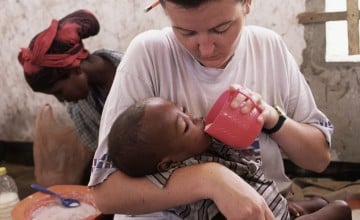
For André Briend, inspiration ultimately came from his own breakfast table in France, via a jar of Nutella. The popular spread was high in calories, didn’t need to be mixed with anything to eat, and didn’t require refrigeration. Peanuts were the logical alternative to hazelnuts, especially as they are a crop that’s generally easy to get in countries with the highest malnutrition rates. It also meant the product was oil-based rather than water, leaving no room for bacteria to spread, and helping one packet of Plumpy’Nut to clock in at 500 much-needed calories.
The missing ingredient
To break away from the TFC model, however, developing the food was not enough. We also needed a programme that adapted to this new feeding model. Enter Dr. Steve Collins, whom Briend describes as “the key person to change the approach.”
Collins’s vision was for an at-home treatment system initially called Community-Based Therapeutic Care, or CTC. Using Plumpy’Nut, as well as simple screening methods for child malnutrition, CTC could decentralise the therapeutic centre model. However, it was unproven and therefore slow to catch on.
This changed in 2000, during a famine in the Horn of Africa. Believing them to be ineffective, the Ethiopian government banned therapeutic feeding centres. In response, Concern partnered with Valid to prove Briend and Collins’s unproven model. We called it Community-Based Management of Acute Malnutrition (CMAM), and were granted permission to test this model in one region of Ethiopia.
A “mind-blowing” duo
Plumpy’Nut was one of several tools in the kit for CMAM. First, we had to be able to make screening for malnutrition easier to do at the community level. Concern trained community volunteers to recognise the signs of malnutrition, including using another simple but effective humanitarian innovation: mid-upper-arm circumference (MUAC) tape.
Rather than needing to weigh each child, a MUAC measurement is an effective correlation, and the tapes (with their colour-coded green, yellow, and red zones) are easy to use and share. Community health volunteers were also trained on how to administer Plumpy’Nut, and how to train parents on administering it as well. They also made follow-up visits to families with children taking the course of RUTF to monitor progress.
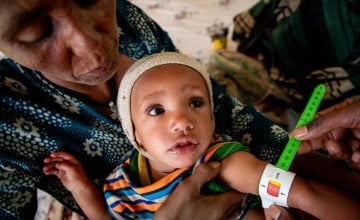
“The idea of CTC was sending these children home with the correct food and the care that went with it, so that the mothers could actually take care of them themselves,” Anne O’Mahony notes. “This was a mind-blowing idea in some ways.”
A mind-blowing idea with mind-blowing results: In emergencies such as a famine, the standard goal for child mortality rates is 10%. In 2000, the norm was between 20% and 30%. In the parts of Ethiopia using Plumpy’Nut in conjunction with CMAM, mortality rates were just 4.5%.
Setting a new standard
With one successful pilot on the books from Ethiopia, Concern followed up with a larger programme one year later in Darfur, Sudan. There, we treated 25,000 acutely malnourished children to similarly positive results. We then ran a longer and larger-scale programme in Malawi, from 2002 to 2006, which gave us more concrete proof of concept especially in terms of treatment, coverage, community acceptance, and cost-effectiveness.
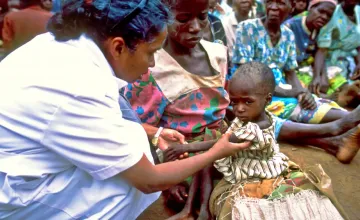
Concern and Valid published a manual on CMAM in 2006. The following year, the World Health Organisation, UNICEF, and the World Food Programme issued a joint statement recognising it as the best practice, setting into motion a transformative approach that is now the global standard.
With just small packets of peanut paste, millions of acutely-malnourished children have been successfully treated through the CMAM approach by organisations around the world. There are also now many brands of RUTF that are being produced, helping us to meet a global demand, and worldwide CMAM reaches more than 70% of malnourished children in over 70 countries.

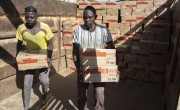

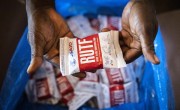

Always improving
While RUTF is still the standard, it’s not the end of the story. Concern continues to work with the CMAM model and adapt it to address some of the biggest causes of hunger around the world.
One of our current models is the Surge approach. While hunger crises can come from out of nowhere (especially in the wake of conflict or a global pandemic), research has shown that many hunger emergencies are seasonally-affected and tied to harvest seasons. Concern’s Surge model (initially known as CMAM Surge) has been developed to anticipate and plan for these hunger seasons with the necessary resources on hand.
Hunger rates have gone up in recent years, yet the fight is far from over. RUTF is one of the simple inventions that has helped us to get ahead of the curve for those who need it most.


